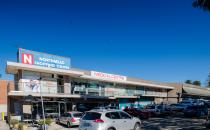You are here
Home » Emergencies
Dental Emergency Guides

See also:
Braces related
Loose bracket
- If the bracket is still hanging onto the wire firmly, just leave it there.
- If the bracket came off and will not stay on the wire, remove it from your mouth. Keep the bracket in a safe place and bring it with you to your next appointment.
- In both cases, if you already have an appointment coming up within a week, it is ok to leave it til then. If your next appointment is further away, request for an earlier one.
Poking wire
- Place a blob of orthodontic wax/silicon over the poking end. If you have run out, try with a blob of chewing gum.
- If the wire is a very thin one, you may try snipping it carefully with a pair of nail clipper or scissor. Do not attempt this if it is a thick stainless steel wire.
- Request for the earliest possible appointment with your dentist.
Bleeding / Tender gums
- Brush the area as well as possible despite the discomfort/pain.
- Make sure no food has been stuck around in the area.
- Rinse at least 3 times daily with warm salt water.
- If problem persists after 3 - 4 days, with no improvement at all, see the dentist as soon as possible.
Pain / Ache on tooth
- Can be expected after each adjustment. Considered normal.
- Will usually tapered off within a few days.
- May take Panadol or Neurofen if necessary.
Trauma
When the tooth is still in its bony socket but displaced from its normal position
- Clean area with luke warm (body temperature, ~36 degree Celcius) salt water if necessary.
- Where possible, try to push/pull the tooth back into its original position gently, then squeeze gently on the bone ridge surrounding the tooth.
- See a dentist as soon as possible.
- Baseline Xray and vitality tests are usually recommended for the long term management of the tooth.
When the tooth has been knocked out of its bony socket totally
- If it is a baby tooth, just leave it out. Re-insertion is generally not recommended.
- If it is a permanent tooth, handle the tooth as minimum as possible, avoid touching the ROOT where possible.
- Rinse the avulsed tooth with milk or patient's own saliva. DO NOT use water or anything else.
- Preferably "store" the avulsed tooth in patient's own mouth, under the tongue --- if the patient is old enough to do that without choking himself/herself. Otherwise, leave the tooth in cold milk in a cup.
- See a dentist as soon as possible, preferably within the hour.
- If you intend to re-insert the tooth yourself, just make sure that the orientation of the tooth is correct. Look at the corresponding tooth on the other side of the mouth for reference. Squeeze the bone ridge around the re-inserted tooth gently once tooth is re-inserted.
- Baseline Xray and vitality tests are usually recommended for the long term management of the tooth.
Excessive Bleeding after a tooth has been removed
- Just bite tightly onto a clean, thickly-folded cotton gauze or handkerchief. Maintain the pressure on the bleeding site for at least 30 minutes, or longer if required.
- Bleeding should stop. It is normal to still have a very tiny amount of blood oozing slowly from the wound, mixing with the saliva, making it seems much more than it actually is.
- Make sure you keep swallowing as you normally would. Do not confuse this with actual true haemorrhage.
- If no stitches or coagulation aid were used, and your INR index (blood coagulation) is greater than 3.0, or you are on Warfarin and does not know your current INR, or you have been taking fair amount of aspirin, bite tightly onto the clean, thickly-folded cotton gauze or handkerchief for at least 60-90 minutes.
- If that doesn't stop the bleeding, see your dentist as soon as possible, or seek care at your nearest hospital Emergency Department.
Facial Swelling
- If the swelling is only around the tooth inside the mouth, not visible or barely visible when looking at one's face, and there are no difficulty in breathing, seek dental treatment as soon as possible. Do NOT go to hospital Emergency Department.
- If the swelling is visible when looking at one's face, it is growing rapidly and distorting the face or causing significant difficulty in breathing or swallowing, go straight to hospital Emergency Department IMMEDIATELY. This is especially crucial in children because the condition tends to worsen much quicker in children than in adults.
Toothache
If your sleep is not disturbed by the 'pain', and it happens only with something cold (air, water) or sweet or acidic.
- Most likely merely dentine sensitivity.
- Use a sensitivity toothpaste to brush, and rub on the root surfaces of the problematic teeth with a very thin, smear layer of the toothpaste after brushing.
- Avoid scrubbing hard when brushing.
- Avoid all acidic food/drinks.
- Seek dental advice if no improvement at all after 7 - 10 days.
If the pain is worse when having something hot/warm or cold, and the tooth ache spontaneously and continuously, and you cannot bite/chew on the tooth, and/or the pain affects your sleep
- Most likely the nerve of the tooth (the pulp) is inflamed/infected.
- See your dentist as soon as possible, even if the pain seems to gradually disappear. The pain will usually return.
If the pain is felt mostly around the gum, not affected by temperature or chewing, and sleep is not disturbed
- Most likely a periodontal (gum) problem.
- Brush the area well, including massaging the gum very gently when brushing.
- Remove all impacted food debri with flossing or using bottle-brush-like tiny brushes, or toothpicks.
- Rinse vigorously with salt water 3 times/day.
- Seek dental advice if no improvement after 3 - 4 days.
Our Doctors
Opening hours
- Monday: 9am–5pm
- Tuesday: 9:30am–6pm
- Wednesday: 9am–5pm
- Thursday: 9am–5pm
- Friday: 9am–5.30pm
- Saturday: 9am–1pm
- Sunday: Closed

